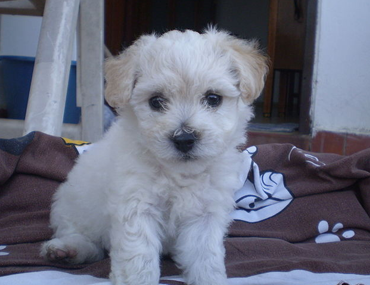Overview:
The “patella” is the kneecap for both people and pets. It’s attached to the shinbone at one end and to powerful thigh muscles at the other end. It sits at the front of the stifle joint, which is the knee joint in dogs and cats. When the knee functions normally, the patella rides smoothly along a groove in the femur. This groove is there to keep the patella where it belongs, which will allow for increased joint flexibility and provide leverage to the knee.
A luxating patella generally occurs when the groove of the femur is too shallow, causing the patella to slide out of place and move too far to one side or the other. This can lead to a weakening of the ligaments which hold the patella in place.
The condition is more common in toy dogs, but it could affect cats or larger dogs as well. Occasionally it’s caused by trauma but most of the time it’s a genetic birth defect known as “polygenic trait.”
Symptoms:
Luxating patella generally presents between four and six months of age. Its appearance could be relatively subtle. You might notice a skip in your pets step, or he might hold one paw in the air and not let it touch the ground.
It might appear, from the way he runs, that only one leg is affected but often both knees will suffer from the same condition.
A luxating patella can be felt from the outside and you’ll be able to actually move the kneecap out of place. For this reason it’s possible your groomer will notice it before you do.
Large dogs who suffer from luxating patella tend to have other conditions as well. Likely, they’ll have poor skeletal alignment and stand knock-kneed.
Your pet won’t necessarily exhibit any pain, even when he limps. It simply depends on the grade of the condition.
Diagnosis/Treatment:
Luxating patella falls into one of four categories.
Grade I: The patella can be luxated manually but won’t move by itself. It will naturally return to its normal position if left alone.
Grade II: The patella might spontaneously luxate but can return to normal position either manually or when the pet straightens the stifle joint.
Grade III: The patella remains luxated most of the time but can be moved back into the correct position manually.
Grade IV: The patella is permanently luxated and can’t be repositioned.
Luxating patella is easy to diagnose, but can be difficult to grade. Your veterinarian might request x-rays to better determine how much damage has occurred. Grade I conditions don’t require surgery but grades II, III, and IV will.
Should your pet require surgery, your veterinarian and staff will provide detailed instructions for you to follow pre and post- operatively. Depending on the severity of your pet’s condition, pain relieving medications may be prescribed in addition to physiotherapy and exercise restriction. It’s very important for your pet’s recovery that you follow your veterinarian’s instructions precisely and return for all recommended follow up evaluations.
Prevention:
Luxating patella is genetic and difficult to prevent. Ramps, stairs or steps might help to reduce the impact on your pet’s knees but there’s no guarantee it will prevent this condition.
If you have any questions or concerns, you should always visit or call your veterinarian – they are your best resource to ensure the health and well-being of your pets.
